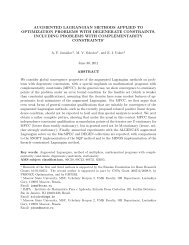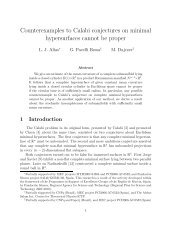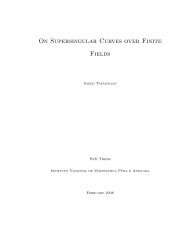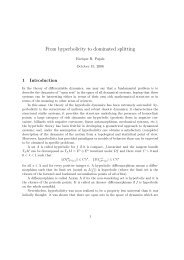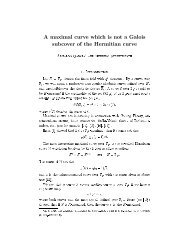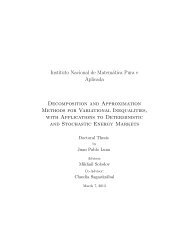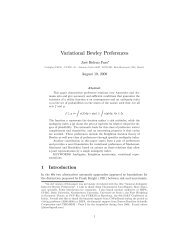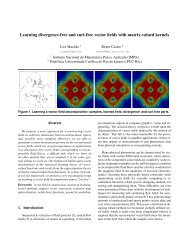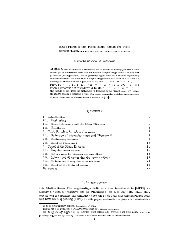a reduced model for internal waves interacting with submarine ...
a reduced model for internal waves interacting with submarine ...
a reduced model for internal waves interacting with submarine ...
Create successful ePaper yourself
Turn your PDF publications into a flip-book with our unique Google optimized e-Paper software.
0.5<br />
0.4<br />
0.3<br />
0.2<br />
η<br />
0.1<br />
0<br />
−0.1<br />
−0.2<br />
−0.3<br />
0 10 20 30 40 50 60<br />
ξ<br />
Figure 4.9: Pulse propagating over a synthetic periodic slowly-varying topography.<br />
Dotted line: numerical solution <strong>for</strong> the LCM using RK4 <strong>for</strong> t=36.3247 and<br />
N= 1024, dashed line: initial condition, solid line: flat bottom exact solution.<br />
and the initial condition. The other parameters areρ 1 = 1,ρ 2 = 2, N= 1024,<br />
∆ξ=2l/N= 0.0491,∆t=∆ξ=0.0491.<br />
A detailed analysis of Fig. 4.9 shows that twice the period of the bottom oscillations<br />
(2.5133) is in very good agreement <strong>with</strong> the reflected wavelength, as<br />
expected from Bragg’s phenomenon theory [12]. See Fig. 4.10 where vertical<br />
bars marking spatial intervals of size 2.5133 fall together <strong>with</strong> the end of each<br />
period of the reflected signal. A comparison between the solutions <strong>for</strong> the flat and<br />
periodic bottoms suggests that the attenuation in the wave amplitude is mainly<br />
due to the dispersive term. It is also patent that the oscillations behind the pulse<br />
correspond to the reflected wave due to the topography.<br />
Example 4.5. The present example adds the nonlinearity ingredient to the previous<br />
example. We consider again the periodic slowly-varying coefficient M(ξ)<br />
76



